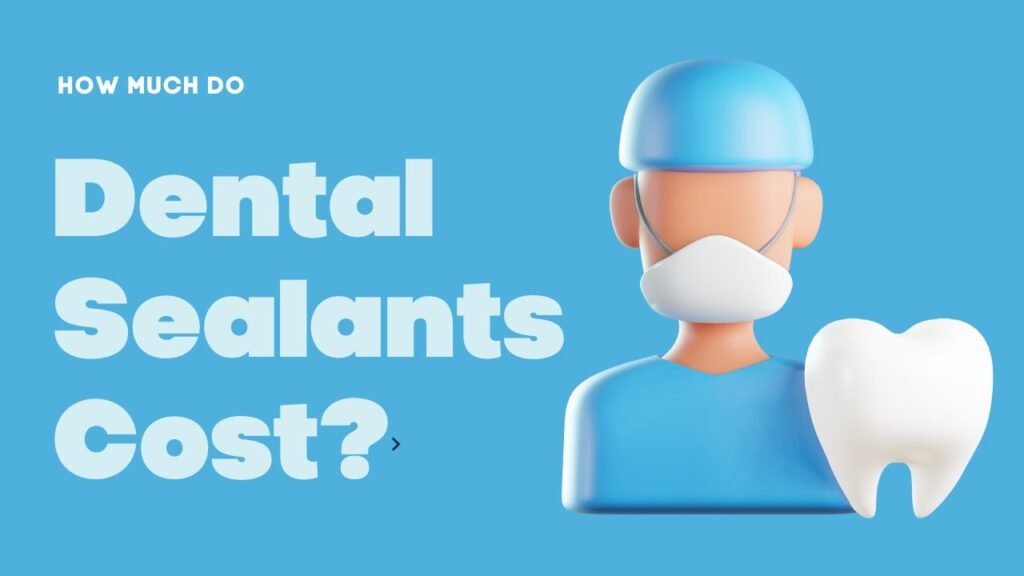Dental sealants are a protective layer applied to the chewing surfaces of molars and premolars to prevent cavities. These thin plastic coatings act as a barrier, shielding teeth from food particles and bacteria that can cause decay.

In this article, we explore the cost of dental sealants, considering both insurance coverage and uninsured scenarios.
Cost of Sealants with Insurance
Dental insurance plans often recognize the value of preventive care and cover sealants as part of their preventive dental services.
This means the cost of sealants may be fully or partially covered, depending on your specific plan. Here’s what to consider:
- Out-of-Pocket Expenses: Even with insurance, you might have some out-of-pocket expenses for sealants. This could include copays or deductibles.
- Insurance Coverage Details: It’s crucial to check with your insurance provider to understand your specific coverage for sealants. Some plans may cover sealants at 100%, while others might require a copay.
- Age Restrictions: Some plans may have age limitations on sealant coverage, typically applying more to children. For example, sealants might be covered for children up to age 18 but not for adults.
- Coverage Limitations: There might be limitations on the number of teeth eligible for sealants per year. Check if your plan limits coverage to certain teeth or a maximum number of teeth per year.
Cost of Sealants Without Insurance
The cost of sealants without insurance typically ranges from $30 to $60 per tooth. This cost can vary depending on several factors:
- Location: Dental fees can vary by geographic location. Costs tend to be higher in metropolitan areas compared to rural areas due to differences in the cost of living and overhead expenses.
- Dental Provider: Different dentists may set their fees for sealants. It’s worth shopping around and comparing prices if you don’t have insurance.
- Number of Teeth Sealed: The cost will increase proportionally with the number of teeth being sealed. Sealing multiple teeth at once might offer some savings, so ask your dentist if they offer discounts for multiple sealants.
Table: Cost Factors for Sealants Without Insurance
| Cost Factor | Price Range |
|---|---|
| Location | Higher in metro areas |
| Dental Provider | Varies by dentist |
| Number of Teeth Sealed | Increases with more teeth |
Additional Considerations
- Durability and Reapplication: Sealants can last for several years, with an average lifespan of 5 to 10 years. Regular dental check-ups allow your dentist to monitor the condition of the sealants and reapply them if necessary. This longevity makes them a cost-effective option for preventing cavities.
- Alternatives to Sealants: While less common, alternative preventive measures like fluoride treatments can help protect teeth from cavities. Fluoride treatments are typically less expensive than sealants but may need to be applied more frequently. Discuss these options with your dentist to determine the best preventive care strategy for you or your child.
Conclusion
Dental sealants are a valuable investment in your oral health. They can significantly reduce the risk of cavities and prevent the need for more expensive dental procedures in the future. The cost of sealants is manageable, especially considering the long-term benefits. If you have dental insurance, be sure to check your coverage details for sealants. Even without insurance, the cost of sealants is generally affordable.
By protecting your teeth from decay, sealants can save you money and discomfort in the long run. Schedule a consultation with your dentist to discuss sealants and determine the best course of action for your dental health needs. Taking this preventive step can lead to a healthier smile and fewer dental problems down the road.
Find Your Perfect Dentist
Easily book appointments with top-rated dentists in your area
Need Emergency Dental Care?
Get immediate help from verified dental professionals